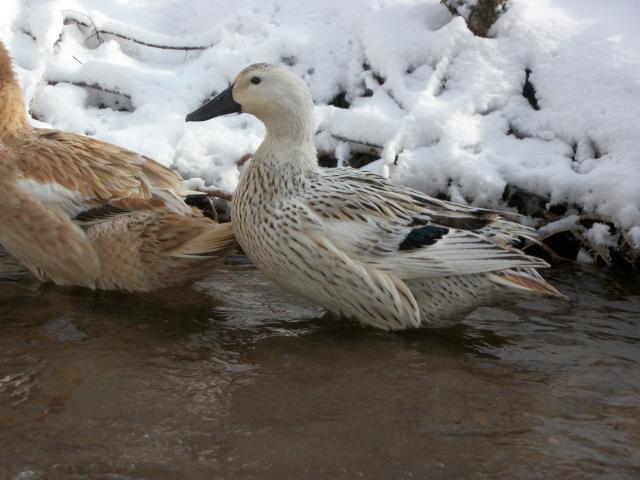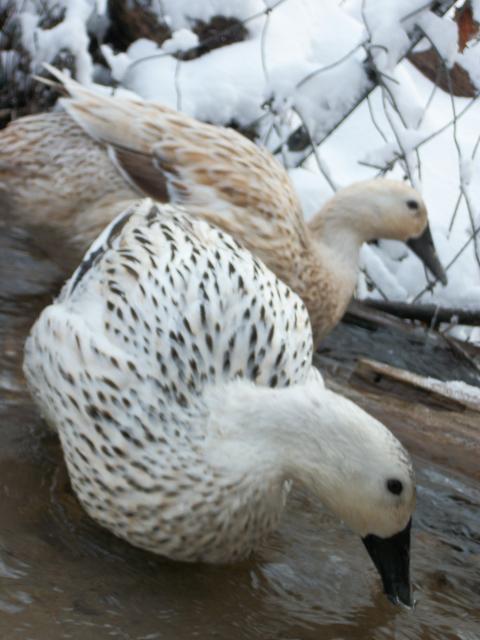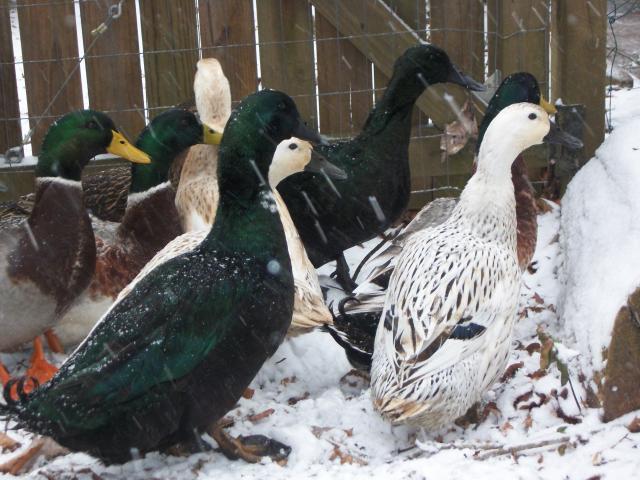I have a Welsh Harlequin hen that I think is beautiful, but I haven't seen others quite like her. She's a silver color phase and her base color is very light cream, almost white. She has very dark, almost black speckles over that, and of course blue speculum feathers. She reminds me of those Arctic falcons (called gyrfalcons), or snowy owls. I think she's the prettiest domestic duck I've ever seen, but of course I'm biased.

What do you think? I want to start showing but I have other ducks too.



Shannon

What do you think? I want to start showing but I have other ducks too.



Shannon













